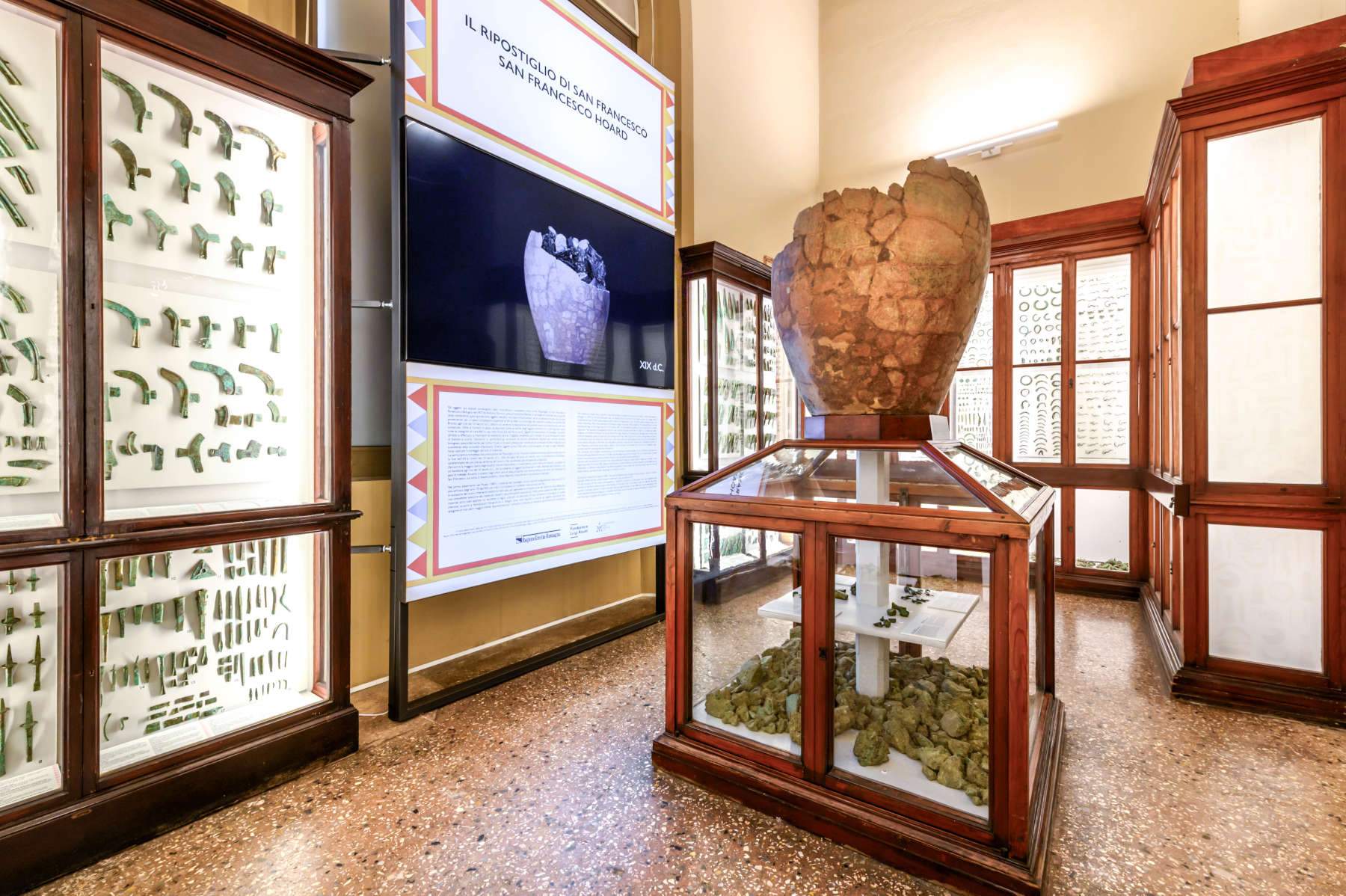Bologna, the Civic Archaeological Museum rearranges the Ripostiglio di San Francesco (St. Francis' Storehouse).
The Civic Archaeological Museum of Bologna’s Civic Museums Sector has announced the completion of work on the new layout of the Ripostiglio di San Francesco in Room Xb of the museum, one of the rooms of the Etruscan section and of extraordinary scientific importance for learning about the dynamics of ancient Etruscan Bologna.
The Ripostiglio di San Francesco represents one of the largest Iron Age deposits in Italy (c. 950 - 720 B.C.) placing itself within the extensive archaeological research on Etruscan antiquities conducted by architect Antonio Zannoni (Faenza, 1833 - Bologna, 1910), who supervised various explorations, ranging from the Etruscan settlement in the city’s historic center to the necropolis, among which the Certosa burial ground stands out. In the area of the Villanovan settlement of Bologna, in 1878 Antonio Zannoni discovered near the present Basilica of San Francesco a large earthenware vase, dolio, which contained 14,838 pieces of bronze weighing a total of more than 14 quintals. This extraordinary find has been interpreted as a smelter’s storehouse mainly because of the presence of artifacts in use in the Early Iron Age, broken objects destined for remelting, unfinished objects, scraps of workmanship, and coarse metal loaves, almost all of them copper, to be used in alloy with tin to make bronze. The objects, carefully arranged inside the dolio attest to the importance of metalworking in Bologna between the 8th and 7th centuries BC.
To facilitate the understanding and enjoyment of the many objects that make up this extraordinary complex, in October 2020 the Civic Archaeological Museum launched an improvement project involving the revision of the lighting system and exhibition layout. This initiative was made possible thanks to the support of the Emilia-Romagna Region, as part of the 2019-2021 Plans of the Cultural Heritage sector, the Luigi Rovati Foundation of Milan and the Fondazione del Monte di Bologna e Ravenna. The Emilia-Romagna Region’s contribution was for the arrangement and lighting of the late 19th-early 20th-century showcases in Room Xb, which, in keeping with the museum’s tradition, have been preserved; the Luigi Rovati Foundation supported the expenses related to the creation of a multimedia product to mediate the context of the Ripostiglio di San Francesco to the public, while the Fondazione del Monte di Bologna e Ravenna financed the creation of the scientific-information apparatus to support the new layout.
The Ripostiglio di San Francesco has been a focal point in the research and enhancement initiatives of the vast cultural heritage related to the Etruscan civilization preserved at the Museo Civico Archeologico di Bologna. This archaeological repository testifies to the degree of development achieved by Felsina, the main Etruscan city in Etruria Padana, which corresponds to present-day Bologna, in approximately the 8th century BC. At that time, the city was already well structured and organized, with a prosperous economy. Thanks to an agreement signed in 2022, the Museo Civico Archeologico has also granted on temporary deposit for the duration of five years at the Luigi Rovati Foundation Art Museum, which opened to the public on September 7, 2022 in Milan, a sampling of several hundred bronze objects from the Ripostiglio, with the dual purpose of integrating an aspect little witnessed in the collections of said museum and offering an example of archaeological research in the second half of the 19th century and its musealization.
On the occasion of the presentation of the new exhibit, from February 11 to April 6, 2024, the Civic Archaeological Museum of Bologna is also promoting The Dolio of Wonders, a series of five events with lectures, guided tours and workshops for children.
Pictured is the rearrangement of the Ripostiglio di San Francesco. Photo: Giorgio Bianchi.
 |
| Bologna, the Civic Archaeological Museum rearranges the Ripostiglio di San Francesco (St. Francis' Storehouse). |
Warning: the translation into English of the original Italian article was created using automatic tools. We undertake to review all articles, but we do not guarantee the total absence of inaccuracies in the translation due to the program. You can find the original by clicking on the ITA button. If you find any mistake,please contact us.




























